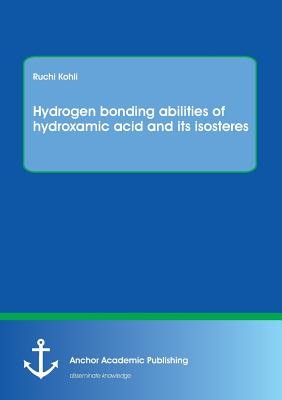
- We will send in 10–14 business days.
- Author: Ruchi Kohli
- Publisher: Anchor Academic Publishing
- ISBN-10: 3960670044
- ISBN-13: 9783960670049
- Format: 14.8 x 21 x 2.1 cm, softcover
- Language: English
- SAVE -10% with code: EXTRA
Hydrogen bonding abilities of hydroxamic acid and its isosteres (e-book) (used book) | bookbook.eu
Reviews
Description
This study comprises seven chapters. In chapter 1 an overview of chemistry, biological functions and literature studies of hydroxamic acids (HA) and its isosteres is presented. The principles of quantum mechanics underlying the computational methods employed to study HAs are given in brief. Chapter 2 describes intra- and intermolecular H-bonding interactions between formohydoxamic acid (FHA) and single water molecule and the dimerization among the isomeric forms. Chapter 3 involves the comparative study of H-bonding abilities of thioformohydoxamic acid (TFHA) and FHA. The deprotonation enthalpies of different sites of FHA and TFHA, probable pathways for interconversion among anions and their H-bonding with water are explored in chapter 4. The Effect of aqueous medium on deprotonation by using solvation methods is also discussed. Further insight into H-bonded aggregates and dimers of HAs is gained through the analysis of calculated stabilization energies and their comparison to similar H-bonded functionalities. The reasons behind the H-bond cooperativity in the aggregates and dimers are explored in chapter 5. Chapter 6 deals with the study of properties of formylphosphinous acid (FPA) isostere of FHA and a comparative study is carried out. In chapter 7, the aggregation of the most stable keto and enol conformer of FHA and TFHA with five amino acid side chain groups occurring at active sites of enzymes is studied.
EXTRA 10 % discount with code: EXTRA
The promotion ends in 19d.21:23:41
The discount code is valid when purchasing from 10 €. Discounts do not stack.
- Author: Ruchi Kohli
- Publisher: Anchor Academic Publishing
- ISBN-10: 3960670044
- ISBN-13: 9783960670049
- Format: 14.8 x 21 x 2.1 cm, softcover
- Language: English English
This study comprises seven chapters. In chapter 1 an overview of chemistry, biological functions and literature studies of hydroxamic acids (HA) and its isosteres is presented. The principles of quantum mechanics underlying the computational methods employed to study HAs are given in brief. Chapter 2 describes intra- and intermolecular H-bonding interactions between formohydoxamic acid (FHA) and single water molecule and the dimerization among the isomeric forms. Chapter 3 involves the comparative study of H-bonding abilities of thioformohydoxamic acid (TFHA) and FHA. The deprotonation enthalpies of different sites of FHA and TFHA, probable pathways for interconversion among anions and their H-bonding with water are explored in chapter 4. The Effect of aqueous medium on deprotonation by using solvation methods is also discussed. Further insight into H-bonded aggregates and dimers of HAs is gained through the analysis of calculated stabilization energies and their comparison to similar H-bonded functionalities. The reasons behind the H-bond cooperativity in the aggregates and dimers are explored in chapter 5. Chapter 6 deals with the study of properties of formylphosphinous acid (FPA) isostere of FHA and a comparative study is carried out. In chapter 7, the aggregation of the most stable keto and enol conformer of FHA and TFHA with five amino acid side chain groups occurring at active sites of enzymes is studied.


Reviews